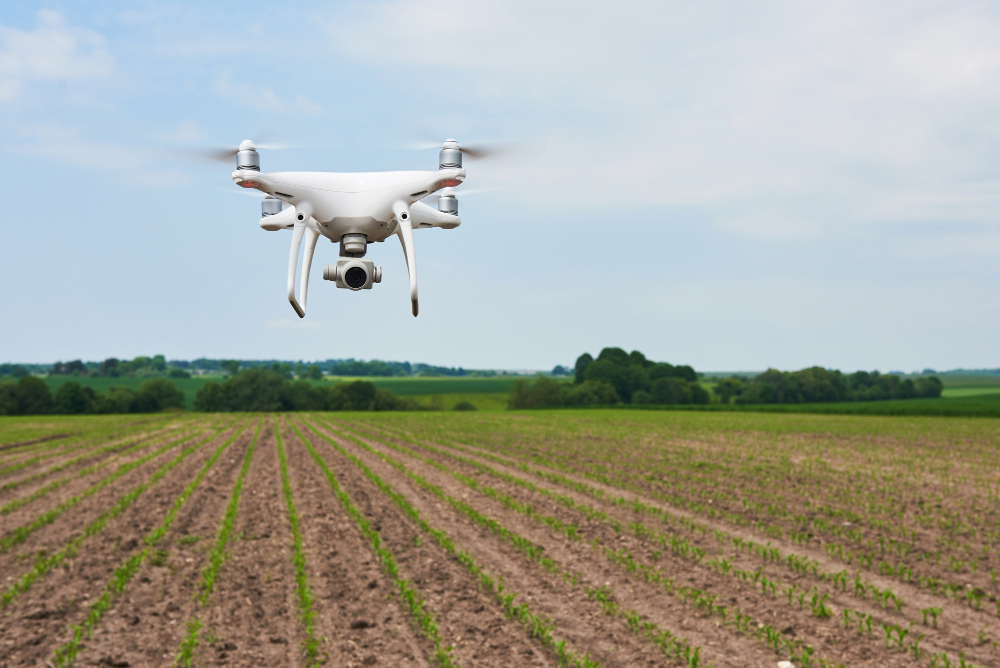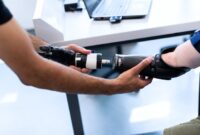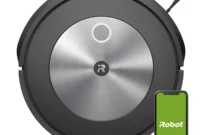In recent years, the agricultural industry has witnessed significant advancements in technology, revolutionizing traditional farming practices. One such innovation that has gained considerable attention is drone crop spraying. By leveraging the power of unmanned aerial vehicles (UAVs) equipped with specialized spraying systems, farmers can now efficiently and effectively apply pesticides, fertilizers, and other crop inputs to their fields. This article explores the various benefits of drone crop spraying, its impact on crop health and operational efficiency, and the challenges and future prospects associated with this technology.

Introduction to drone crop spraying
Drone crop spraying involves the use of remotely controlled or autonomous drones to spray crops with agricultural inputs. These drones are equipped with precision spraying systems that can accurately target specific areas of a field, ensuring optimal distribution of pesticides, fertilizers, and herbicides. The technology behind these drones enables farmers to overcome the limitations of traditional ground-based spraying methods and brings numerous advantages to the agricultural sector.
Advantages of drone crop spraying
Precision and accuracy
Precision and accuracy are two crucial advantages of drone crop spraying that contribute to its efficiency and effectiveness in agriculture.
Precision refers to the ability of drones to target specific areas with a high level of accuracy. Drones are equipped with advanced GPS and sensor technologies that allow them to follow pre-defined flight paths and precisely identify the areas requiring treatment. This precision ensures that the pesticides, fertilizers, or other crop inputs are applied only where they are needed, minimizing waste and maximizing their effectiveness.
Accuracy, on the other hand, pertains to the ability of drones to deliver the crop inputs with precision and consistency. Drones utilize specialized spraying systems that can precisely control the flow rate, droplet size, and spray pattern. This level of accuracy ensures uniform coverage of the targeted areas, avoiding over-application or missed spots. By delivering the inputs accurately, drones help optimize their absorption by the crops, leading to improved efficacy and minimizing potential crop damage.
The combination of precision and accuracy in drone crop spraying offers several benefits. Firstly, it allows for targeted application, meaning that only the areas affected by pests, diseases, or nutrient deficiencies receive the necessary treatment. This targeted approach reduces the overall quantity of chemicals used, minimizing the environmental impact and promoting sustainable farming practices.
Secondly, precision and accuracy in drone crop spraying help reduce the risk of crop damage. Traditional ground-based spraying methods often result in crop trampling, soil compaction, or uneven application, which can harm the plants. Drones, with their ability to navigate through fields with precision, avoid physical contact with the crops, ensuring minimal disturbance and minimizing the risk of crop damage.
Furthermore, the precise and accurate application of crop inputs improves the overall health and yield of the crops. By delivering the right amount of pesticides, fertilizers, or other treatments to specific areas, drones help address pest infestations, nutrient deficiencies, or weed growth effectively. This targeted approach maximizes the effectiveness of the applied inputs while minimizing the risk of detrimental effects on the crops.
In summary, precision and accuracy are key attributes of drone crop spraying that enable farmers to optimize the use of crop inputs, minimize waste, and ensure uniform coverage of targeted areas. This leads to improved crop health, enhanced yields, and a more sustainable approach to agriculture.
Time and cost savings
Time and cost savings are significant advantages offered by drone crop spraying compared to traditional methods of applying pesticides and fertilizers. Let’s delve into how drones contribute to these savings:
- Efficiency in covering large areas: Drones are capable of covering larger areas of farmland in a shorter time compared to manual or ground-based spraying methods. With their ability to fly over fields, drones can swiftly move from one location to another, reaching remote or inaccessible areas efficiently. This saves valuable time for farmers, allowing them to allocate their resources to other essential tasks.
- Reduced labor requirements: Drone crop spraying minimizes the need for manual labor in the field. Unlike traditional methods that require a team of workers to carry out spraying operations, drones can perform the task autonomously or with minimal human intervention. This reduction in labor not only saves costs but also addresses the challenge of labor shortages that farmers often face, particularly during peak seasons.
- Optimized resource utilization: Drones offer precise and targeted application of pesticides, fertilizers, and other crop inputs. By using advanced imaging and sensor technologies, drones can identify specific areas of the field that require treatment, such as pest-infested zones or nutrient-deficient regions. This targeted approach ensures that inputs are applied only where needed, reducing wastage and optimizing resource utilization. Farmers can achieve the desired results with less input, leading to cost savings and a more environmentally friendly approach to farming.
- Streamlined logistics: The use of drones simplifies logistics and operational planning for crop spraying. Farmers can plan and schedule spraying operations more efficiently, taking advantage of favorable weather conditions or specific crop growth stages. Drones can be quickly deployed and are not constrained by the same logistical challenges associated with traditional machinery, such as navigating through narrow paths or avoiding obstacles. This streamlined process saves time and enables farmers to make the most of the optimal spraying windows.
- Lower equipment and maintenance costs: Although initially, the investment in drones and associated equipment may seem substantial, the costs have been decreasing over time. As drone technology advances and becomes more accessible, the upfront investment required for drone crop spraying is becoming more affordable for farmers. Additionally, drones often require less maintenance compared to larger agricultural machinery, resulting in reduced maintenance costs over the long term.
By combining these time and cost-saving benefits, drone crop spraying offers a more efficient and cost-effective approach to agricultural practices. Farmers can maximize their productivity, optimize resource utilization, and ultimately achieve better financial outcomes for their farming operations.
Environmental benefits
Drone crop spraying offers significant environmental benefits, making it a more sustainable and eco-friendly alternative to traditional methods of applying pesticides and fertilizers. Here are some of the key environmental advantages of drone crop spraying:
- Reduced chemical drift: Chemical drift refers to the unintentional movement of sprayed pesticides or fertilizers beyond the target area. Traditional ground-based spraying methods are more prone to chemical drift due to factors like wind speed and direction. However, drones can overcome this challenge through their precision and controlled spraying mechanisms. Drones can accurately target specific areas of the field, reducing the risk of chemical drift. This precise application minimizes the potential for off-target contamination of water sources, neighboring crops, or natural habitats, ensuring a safer environment.
- Optimized chemical usage: With their ability to precisely identify areas that require treatment, drones optimize the use of pesticides, fertilizers, and other crop inputs. Instead of blanket application across entire fields, drones can target specific zones affected by pests, diseases, or nutrient deficiencies. This targeted approach reduces overall chemical usage, minimizing the environmental impact and potential risks associated with excessive chemical application. It promotes the principles of integrated pest management (IPM) and precision agriculture, ensuring a more sustainable and responsible use of agricultural chemicals.
- Protection of water quality: Traditional spraying methods can result in runoff, where excess chemicals are washed into nearby water bodies, potentially contaminating them. Drones, with their precise application and reduced chemical drift, minimize the risk of chemical runoff. By ensuring that pesticides and fertilizers are applied only where needed, drones help protect water quality, preserving the health of aquatic ecosystems and safeguarding drinking water sources.
- Conservation of biodiversity: By reducing chemical drift and optimizing chemical usage, drone crop spraying contributes to the conservation of biodiversity. Traditional spraying methods can harm beneficial insects, pollinators, and natural predators that play vital roles in ecological balance. Drones help minimize the unintended exposure of non-target organisms to pesticides, supporting the conservation of beneficial insects and promoting a healthier and more balanced ecosystem on farmland.
- Promotion of sustainable farming practices: The environmental benefits of drone crop spraying align with the principles of sustainable agriculture. By minimizing chemical usage, reducing runoff, and protecting water quality, drones support sustainable farming practices that prioritize environmental stewardship. Farmers adopting drone technology demonstrate their commitment to responsible and sustainable agricultural production, contributing to the long-term viability of their operations and the preservation of natural resources.
Overall, drone crop spraying offers tangible environmental advantages, reducing chemical exposure, protecting water quality, preserving biodiversity, and promoting sustainable farming practices. It represents a significant step toward more eco-friendly and sustainable agriculture while ensuring the efficient and effective management of crop inputs.
Improved crop health and yield
Targeted application of pesticides and fertilizers
Drone crop spraying enables targeted application of pesticides and fertilizers, leading to improved crop health and yield. Drones equipped with sophisticated imaging and sensing technologies can identify areas with pest infestations or nutrient deficiencies, allowing for specific treatment. This targeted approach minimizes the risk of crop damage while maximizing the effectiveness of the applied inputs.
Reduced crop damage
Traditional ground-based spraying methods often involve the use of heavy machinery, which can inadvertently damage crops during the application process. With drone crop spraying, the risk of crop trampling and soil compaction is significantly reduced. Drones can navigate through fields with precision, avoiding physical contact with the crops and ensuring minimal disturbance.
Enhancing operational efficiency
Quick and flexible deployment
Drones offer quick and flexible deployment options for crop spraying operations. With their ability to take off and land from various locations, drones can access remote or challenging areas of a farm that may be difficult to reach with traditional equipment. This flexibility allows farmers to respond promptly to changing weather conditions, time-sensitive treatments, or urgent pest control requirements.
Reduced labor requirements
By employing drones for crop spraying, farmers can significantly reduce their labor requirements. Unlike manual spraying methods that often require a team of workers, drones can perform the spraying task autonomously or with minimal human intervention. This reduction in labor not only reduces costs but also addresses the issue of labor shortages in the agricultural sector, particularly during peak farming seasons.
Efficient use of resources
Drone crop spraying enables the precise and efficient use of resources such as pesticides and fertilizers. With the ability to precisely target specific areas, farmers can minimize wastage and ensure that the applied inputs are utilized optimally. This not only reduces costs but also reduces the environmental impact associated with excess chemical usage.
Overcoming challenges and limitations
While drone crop spraying offers significant advantages, it also faces certain challenges and limitations that need to be considered.
Regulatory considerations
The use of drones in agriculture is subject to various regulations and guidelines imposed by aviation authorities and environmental agencies. Farmers must comply with these regulations, which may include obtaining appropriate licenses or permits, adhering to flight restrictions, and ensuring the safety and privacy of nearby communities.
Weather conditions and flight restrictions
Drone crop spraying operations are dependent on suitable weather conditions and may be restricted during adverse weather conditions such as high winds or heavy rainfall. Farmers need to plan their spraying schedules accordingly, considering weather forecasts and any flight restrictions that may be in place.
Initial investment and training
Adopting drone crop spraying requires an initial investment in acquiring the necessary equipment and training personnel. While the costs associated with drones and spraying systems have been decreasing, they still represent a significant investment for many farmers. Additionally, training personnel to operate and maintain the drones is crucial for safe and effective operations.
Case studies and success stories
Numerous case studies and success stories have demonstrated the positive impact of drone crop spraying on the farming industry. Farmers who have embraced this technology have reported increased productivity, improved crop health, and enhanced profitability. The ability to precisely target areas requiring treatment has resulted in higher crop yields and reduced input costs.
Future trends and advancements
The future of drone crop spraying holds promising advancements. Automation and artificial intelligence (AI) integration are expected to further enhance the capabilities of these drones. AI algorithms can analyze sensor data in real-time, identifying crop stress, disease outbreaks, or nutrient deficiencies. This data-driven approach will enable even more precise and targeted spraying, maximizing crop health and reducing the need for blanket applications.
Conclusion
Drone crop spraying has emerged as a game-changer in the agricultural industry, offering numerous benefits and potential for increased efficiency. The precise and accurate application of crop inputs, along with the time and cost savings, make it an attractive option for farmers seeking to optimize their operations. Despite the challenges and limitations, drone crop spraying continues to gain momentum, paving the way for a more sustainable and productive future in agriculture.
FAQs
Q: How does drone crop spraying work?
A: Drone crop spraying involves the use of unmanned aerial vehicles (UAVs) equipped with specialized spraying systems. The drones are programmed to follow pre-defined flight paths and apply pesticides, fertilizers, or other crop inputs to specific areas of a field using precision spraying techniques.
Q: Is drone crop spraying safe for the environment?
A: Yes, drone crop spraying can be safer for the environment compared to traditional spraying methods. Drones can precisely target intended areas, reducing chemical drift and minimizing the potential for pollution. Additionally, the accurate application of crop inputs helps minimize overall chemical usage.
Q: Are there any legal restrictions on using drones for crop spraying?
A: Yes, the use of drones for crop spraying is subject to regulations and guidelines imposed by aviation authorities and environmental agencies. Farmers must comply with these regulations, which may include obtaining licenses or permits, adhering to flight restrictions, and ensuring safety and privacy.
Q: Can drone crop spraying be used on all types of crops?
A: Yes, drone crop spraying can be used on a wide range of crops, including row crops, orchards, vineyards, and even forestry applications. The flexibility and adaptability of drones make them suitable for various farming practices.
Q: What are the potential cost savings associated with drone crop spraying?
A: Drone crop spraying offers significant cost savings compared to traditional methods. It reduces labor requirements, optimizes the use of inputs, and increases overall farm productivity. The exact cost savings may vary depending on the size of the farm, crop type, and local factors.


